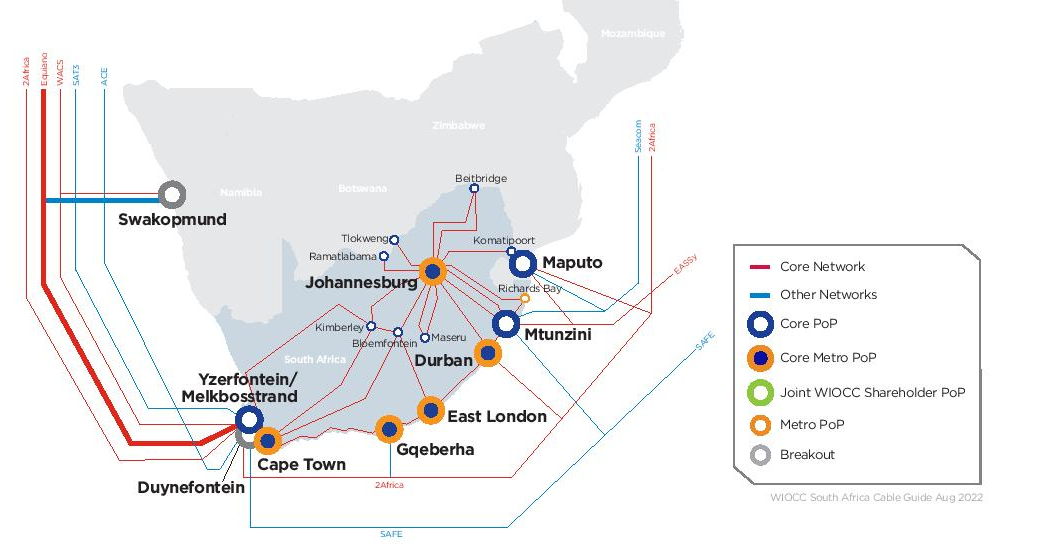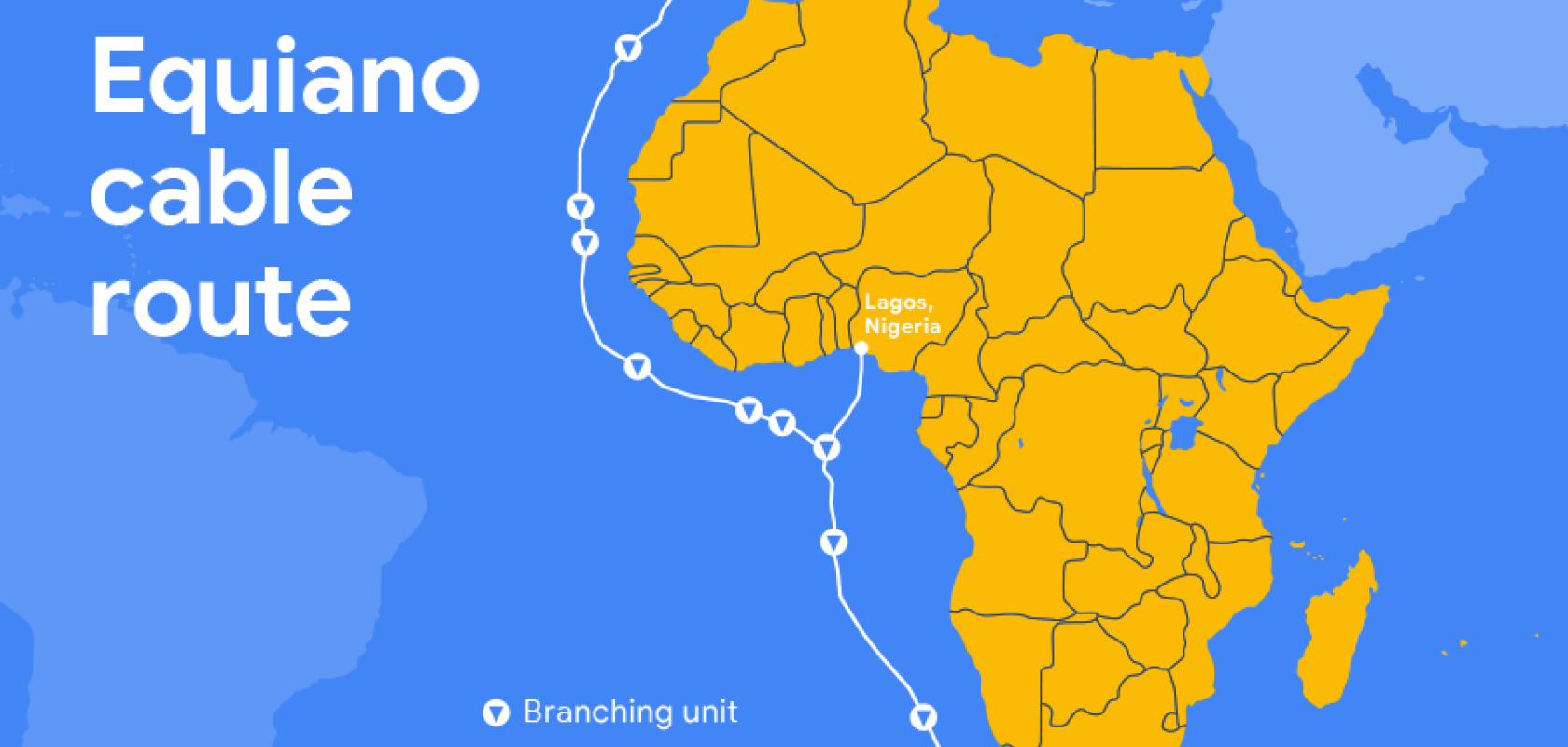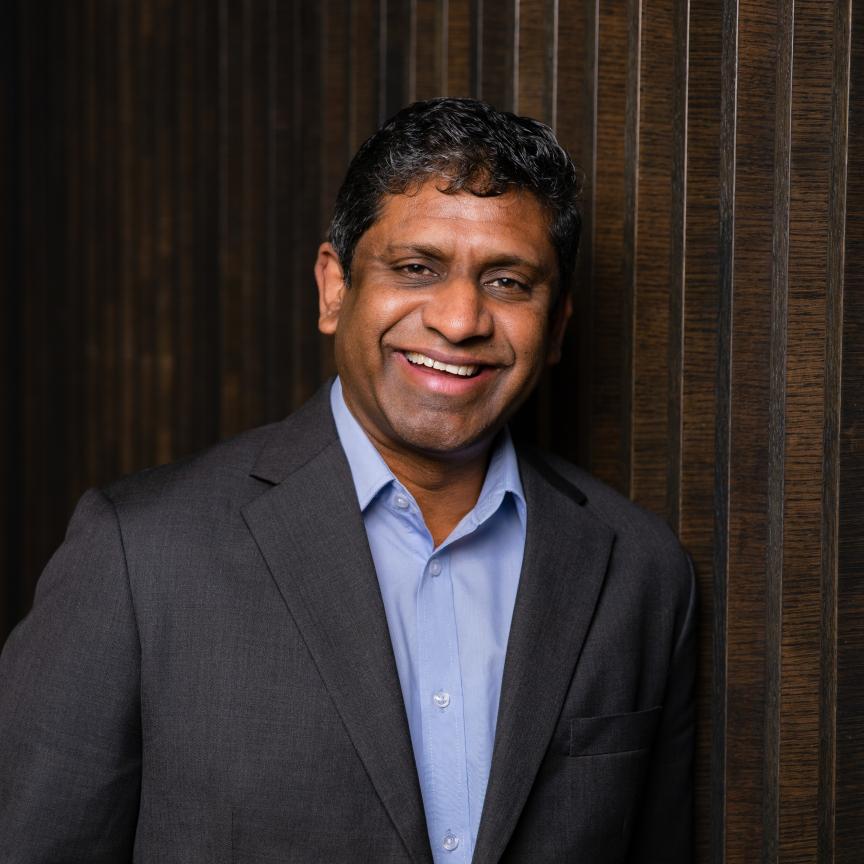Google’s 144Tb/s, 12 fibre-pair subsea cable will have a direct impact on connectivity throughout the Southern Africa region.
Announced in 2019, Equiano is a private subsea cable that connects Africa with Europe, starting in western Europe and running along Africa’s west coast, from Portugal to South Africa, with branching units that can extend connectivity to additional African countries. The cable was Google’s third private international cable after Dunant and Curie, and its 14th subsea cable investment. The cable has now landed in South Africa.
Its infrastructure is based on space-division multiplexing (SDM) technology and incorporates optical switching at the fibre-pair level, rather than wavelength-level switching. This is designed to simplify the allocation of cable capacity, providing the flexibility to add and reallocate it in different locations as needed.
West Indian Ocean Cable Company (WIOCC) is a key partner in Equiano, landing the cable in Lagos, Nigeria, and owning a full fibre pair on the system. As a fibre pair owner, the company’s Equiano capacity is upgradable fully under its own control. It owns and manages its own submarine line terminating equipment, choosing to light and upgrade its capacity as it wishes to meet the needs and demands of its clients.
WIOCC’s Equiano capacity will be extended into a new Open Access Data Centres (OADC - a WIOCC Group company) facility currently undergoing fit-out in Rondebosch, Cape Town, where clients can interconnect with terrestrial infrastructure providers, cloud networks, partners, suppliers and other ecosystem members.

The Equiano cable will allow WIOCC, Africa’s digital backbone, to extend its wholesale offering in South Africa (credit: WIOCC)
Services available from WIOCC in South Africa include high-quality carrier IP Transit, point-to-point national connectivity and high-performance metro connect, and open access colocation services in specific locations – via OADC.
Chris Wood, CEo at WIOCC Group says: ‘Our investment in Equiano continues our long-standing policy of making strategic investments in subsea cables. We own almost a third of the >10Tb/s EASSy system, which extends from South Africa along Africa’s eastern coastline to Djibouti and Port Sudan; we deliver more capacity than any other carrier on the WACS system, which links South Africa to western Europe and lands in many countries along the west coast of Africa; and we are a member of the 2Africa cable, which will bring another high-capacity connectivity option to Africa during 2023/24.’
Look out for an in-depth feature, focused on submarine networks in our upcoming Autumn edition!


